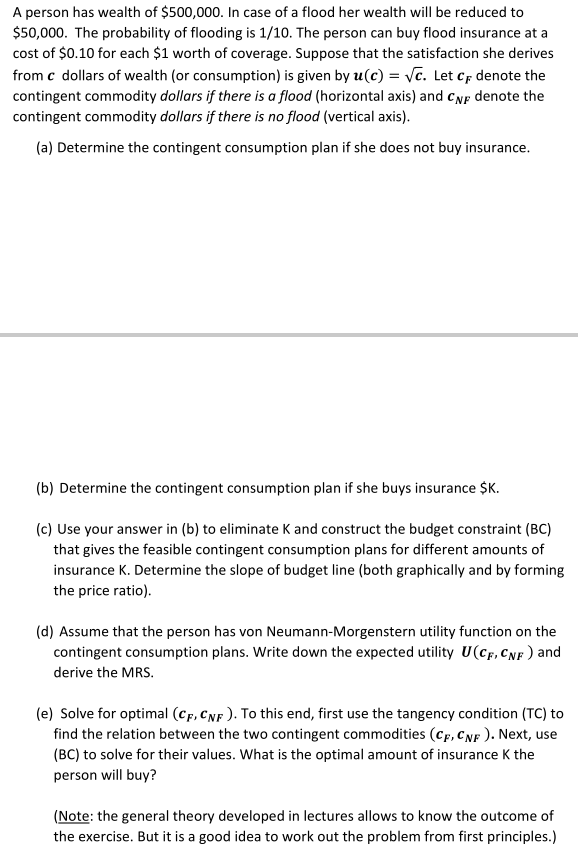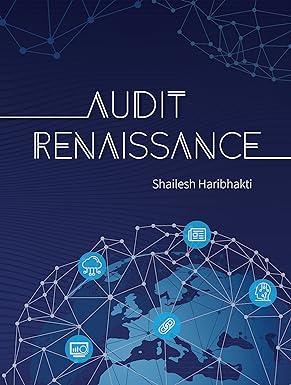
A person has wealth of $500,000. In case of a flood her wealth will be reduced to $50,000. The probability of flooding is 1/10. The person can buy flood insurance at a cost of $0.10 for each $1 worth of coverage. Suppose that the satisfaction she derives from c dollars of wealth (or consumption) is given by u(c)=c. Let cF denote the contingent commodity dollars if there is a flood (horizontal axis) and cNF denote the contingent commodity dollars if there is no flood (vertical axis). (a) Determine the contingent consumption plan if she does not buy insurance. (b) Determine the contingent consumption plan if she buys insurance $K. (c) Use your answer in (b) to eliminate K and construct the budget constraint (BC) that gives the feasible contingent consumption plans for different amounts of insurance K. Determine the slope of budget line (both graphically and by forming the price ratio). (d) Assume that the person has von Neumann-Morgenstern utility function on the contingent consumption plans. Write down the expected utility U(cF,cNF) and derive the MRS. (e) Solve for optimal (cF,cNF). To this end, first use the tangency condition (TC) to find the relation between the two contingent commodities (cF,cNF). Next, use (BC) to solve for their values. What is the optimal amount of insurance K the person will buy? (Note: the general theory developed in lectures allows to know the outcome of the exercise. But it is a good idea to work out the problem from first principles.) A person has wealth of $500,000. In case of a flood her wealth will be reduced to $50,000. The probability of flooding is 1/10. The person can buy flood insurance at a cost of $0.10 for each $1 worth of coverage. Suppose that the satisfaction she derives from c dollars of wealth (or consumption) is given by u(c)=c. Let cF denote the contingent commodity dollars if there is a flood (horizontal axis) and cNF denote the contingent commodity dollars if there is no flood (vertical axis). (a) Determine the contingent consumption plan if she does not buy insurance. (b) Determine the contingent consumption plan if she buys insurance $K. (c) Use your answer in (b) to eliminate K and construct the budget constraint (BC) that gives the feasible contingent consumption plans for different amounts of insurance K. Determine the slope of budget line (both graphically and by forming the price ratio). (d) Assume that the person has von Neumann-Morgenstern utility function on the contingent consumption plans. Write down the expected utility U(cF,cNF) and derive the MRS. (e) Solve for optimal (cF,cNF). To this end, first use the tangency condition (TC) to find the relation between the two contingent commodities (cF,cNF). Next, use (BC) to solve for their values. What is the optimal amount of insurance K the person will buy? (Note: the general theory developed in lectures allows to know the outcome of the exercise. But it is a good idea to work out the problem from first principles.)







